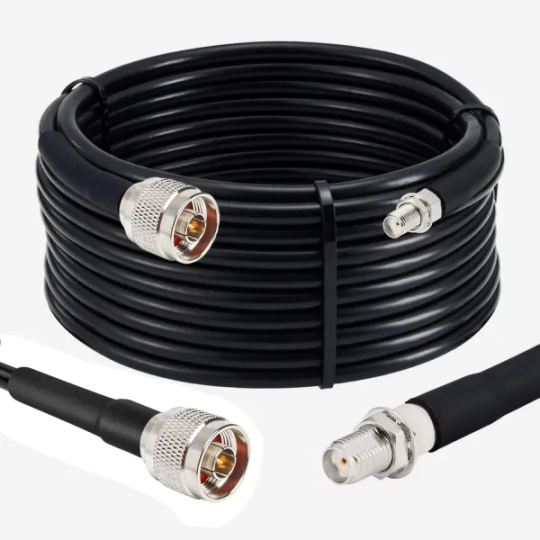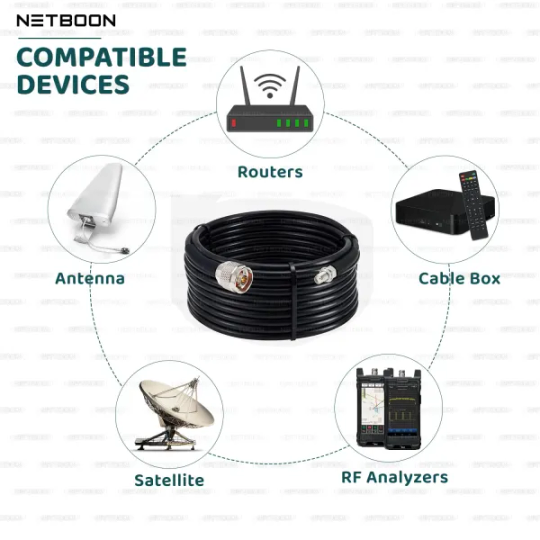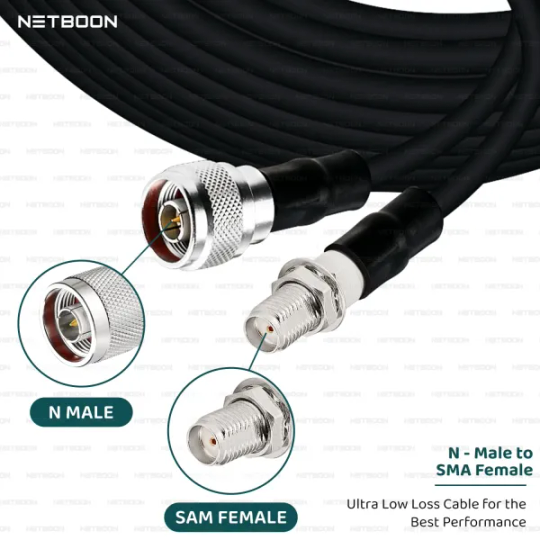#WirelessConnectivity
Explore tagged Tumblr posts
Text
Revolutionizing IoT Development with Cutting-Edge Engineering

At MeshTek, we redefine IoT development services with a seamless fusion of hardware and software expertise. Our team specializes in embedded systems, wireless connectivity, and AI-driven IoT solutions, empowering manufacturers to create smart, scalable, and high-performing products. From microcontroller-based firmware design to advanced long-range mesh networking, we provide full-stack development, mobile app integration, and cloud-based analytics to accelerate speed-to-market while reducing costs. Partner with MeshTek to bring your IoT vision to life with innovation, precision, and reliability.
#IoTDevelopment#IoTSolutions#SmartTechnology#WirelessConnectivity#EmbeddedSystems#AIoT#FirmwareDesign#MeshNetworking#IoTPlatform#TechInnovation#IoTIntegration#SmartDevices#CloudIoT#FutureOfTech
1 note
·
View note
Text

Zealsound Wireless Lavalier Microphone for iPhone iPad Android with Charging Case, Lapel Mic for Vlog Interview Live Streaming. Offer with Choice Original price : USD 53.04 Now price : USD 19.09 Featured brands | Shipped within 72 hrs. Free shipping | Free returns. Check the Link for more info : https://s.click.aliexpress.com/e/_DBu0Mfv
Enhance your audio quality and capture crystal-clear sound with the Zealsound Wireless Lavalier Microphone. Designed for iPhone, iPad, and Android devices, this wireless lapel mic is the perfect companion for vlogs, interviews, live streaming, and more.
Say goodbye to tangled wires and limited mobility. The Zealsound Wireless Lavalier Microphone offers hassle-free connectivity, allowing you to move freely while recording or streaming. The wireless design provides a range of up to 50 feet, ensuring that you can capture audio without being tied down by cords.
#WirelessLavalierMic#ZealsoundMicrophone#VlogMicrophone#InterviewMicrophone#LiveStreamingMic#AudioQuality#MobileRecording#WirelessConnectivity
2 notes
·
View notes
Text



#NETBOON#HLF400Cable#CoaxialCable#NMaleToSMAFemale#RFCable#LowLossCable#50OhmCable#AntennaCable#WirelessConnectivity#RFCommunication#TelecomCable#WiFiAntennaCable#DurableCables#HighFrequencyCable#RFSolutions
0 notes
Text

HPE Networking AP25 Instant On AP25 (RW) 4x4 Wi-Fi 6 AP R9B28A
Experience seamless connectivity with the HPE Networking AP25 Instant On AP25 (RW) 4x4 Wi-Fi 6 Access Point. Designed for fast, reliable wireless performance, it supports multiple devices with enhanced speed and coverage. Ideal for businesses seeking effortless network management and superior Wi-Fi 6 technology in a compact design.
For more information, Visit:https://newtrend.ae/product-category/aruba/ Live chat: +971 507542792
#HPENetworking#InstantOn#WiFi6#AccessPoint#WirelessConnectivity#FastInternet#ReliableNetwork#BusinessNetworking#NetworkManagement#TechSolutions#NewTrendAE#ArubaNetworking#SeamlessConnectivity#4x4WiFi6#CompactDesign#EnhancedCoverage#MultipleDevices#TechInnovation#SmartBusiness#UAEtech
0 notes
Text
Use the 15dBi Yagi Antenna to Boost Your 3G Signal!
Do you require a more robust 3G connection? See our 15dBi Yagi Antenna with 3-meter RG58 wire and N (M) Straight Connector. It is made to provide reliable reception, increased range, and excellent performance in any industrial or outdoor environment. Designed for long-lasting connectivity!
#EteilyAntenna#WirelessConnectivity#RuralSignalFix#AntennaExperts#YagiPower#IoTConnectivity#TechThatDelivers#TelecomEssentials#3GYagiAntenna
0 notes
Text
Distributed Antenna System (DAS) Market Future Trends: Innovations and Growth Opportunities in Wireless Connectivity
The Distributed Antenna System (DAS) market future trends indicate a dynamic evolution driven by growing demand for robust wireless connectivity in indoor and dense urban environments. DAS technology, designed to improve cellular coverage and capacity by distributing signals through multiple antennas, is increasingly vital as mobile data traffic soars and next-generation networks emerge.
This article explores the future trends shaping the DAS market, highlighting technological innovations, growing applications, regional developments, and strategic market shifts that are expected to define the industry’s growth in the coming years.

Rising Demand for Enhanced Indoor Connectivity
One of the core drivers for the DAS market is the growing necessity for reliable indoor wireless coverage. Traditional cell towers often fail to provide adequate signal penetration in large buildings, stadiums, airports, hospitals, and commercial complexes.
Trend Toward High-Capacity Venues: With the increase in events and gatherings, venues such as sports arenas, convention centers, and transportation hubs require enhanced connectivity solutions to support thousands of simultaneous users. DAS systems are evolving to offer higher capacity and seamless handoff capabilities.
Smart Building and Campus Deployments: The integration of DAS with smart building technologies is becoming a significant trend. Organizations aim to ensure uninterrupted connectivity for IoT devices, security systems, and mobile users within corporate campuses and educational institutions, pushing DAS demand.
Integration with 5G Networks
The rollout of 5G networks is one of the most transformative factors influencing DAS market future trends.
5G-Ready DAS Solutions: Future DAS deployments are being designed to support 5G’s higher frequency bands and massive MIMO (multiple-input multiple-output) technology. This enables ultra-fast data speeds, lower latency, and improved network reliability indoors.
Hybrid Networks Combining DAS and Small Cells: To maximize coverage and capacity, hybrid solutions combining DAS with small cell networks are gaining popularity. This strategic integration addresses challenges such as limited spectrum and network densification required by 5G.
Support for Network Slicing and Private Networks: As 5G enables network slicing and dedicated private networks, DAS systems are adapting to provide customizable coverage tailored to specific business or industrial needs, particularly in manufacturing, logistics, and healthcare sectors.
Increasing Adoption Across Diverse Industries
The DAS market is expanding beyond traditional telecommunications to serve multiple verticals, reflecting broadening application scenarios.
Healthcare: Hospitals require reliable, secure wireless connectivity for critical medical equipment, patient monitoring, and emergency communication. DAS ensures consistent signal quality in complex building layouts and underground areas.
Transportation: Airports, train stations, and metro systems increasingly deploy DAS to enhance passenger connectivity, operational communications, and security systems.
Retail and Hospitality: To meet customer expectations for seamless mobile experiences, malls, hotels, and resorts implement DAS to boost coverage and enable location-based services.
Industrial and Manufacturing: Factories and warehouses use DAS to support IoT devices, automated guided vehicles (AGVs), and real-time monitoring systems, enhancing operational efficiency and safety.
Technological Innovations Influencing Future Trends
Advancements in DAS technology are key to market growth and adapting to evolving connectivity needs.
Cloud-Based and Software-Defined DAS: Future DAS systems leverage cloud platforms and software-defined networking (SDN) to enable remote management, flexible configuration, and scalability. This reduces deployment costs and improves system responsiveness.
Energy Efficiency and Green Technologies: New DAS designs focus on reducing power consumption and integrating with renewable energy sources, aligning with global sustainability goals.
Improved Security Features: As DAS networks handle sensitive data and critical communications, enhanced cybersecurity measures are being incorporated, including encryption, intrusion detection, and compliance with regulatory standards.
Regional Market Trends and Growth Opportunities
Regional developments strongly influence DAS market future trends, driven by infrastructure investments and government policies.
North America Leading in Advanced Deployments: The U.S. and Canada are at the forefront of adopting 5G-ready DAS, supported by substantial investments in smart city projects and enterprise networks.
Asia-Pacific’s Rapid Urbanization and Connectivity Needs: Countries like China, India, Japan, and South Korea are witnessing rapid urban growth, increasing demand for indoor wireless solutions. Government initiatives promoting digital infrastructure boost DAS deployment.
Europe’s Focus on Public Safety and Regulatory Compliance: Europe emphasizes secure and resilient communication networks, including DAS for public safety, emergency response, and transport systems.
Market Challenges and Adaptations
Despite promising trends, the DAS market faces challenges that require strategic responses.
High Initial Deployment Costs: Although long-term benefits are substantial, upfront investments for DAS installation can be significant, particularly for small and medium-sized enterprises.
Complex Integration and Maintenance: Deploying DAS in existing buildings requires careful planning to avoid disruption. Continuous maintenance and upgrades to keep pace with evolving network standards are necessary.
Competition from Alternative Technologies: Small cells, Wi-Fi 6, and emerging wireless solutions pose competitive threats. DAS providers must differentiate through superior performance, scalability, and integration capabilities.
Strategic Outlook for DAS Market Growth
The future of the DAS market is promising, characterized by innovation and expanding use cases. Providers focusing on developing flexible, scalable, and cost-effective DAS solutions tailored for 5G and beyond will capture significant market share.
Collaboration with telecom operators, infrastructure companies, and enterprise customers will be critical to delivering customized deployments. Embracing software-defined technologies and cloud integration will also enhance service agility.
Conclusion
The Distributed Antenna System (DAS) market future trends showcase a rapidly evolving landscape shaped by 5G adoption, industry diversification, and technological breakthroughs. As wireless connectivity becomes indispensable across all facets of life and business, DAS will play a pivotal role in ensuring seamless, high-quality indoor coverage worldwide. Stakeholders who anticipate these trends and invest in innovation will position themselves at the forefront of this expanding market.
0 notes
Text
#IndustrialIoT#SmartMetering#WirelessConnectivity#IoTInnovation#DigitalInfrastructure#SmartCities#IndustrialAutomation#TechMilestone#powerelectronics#powermanagement#powersemiconductor
0 notes
Text
In-building Wireless Market Dynamics: Examining the Impact of 5G and IoT
In-building Wireless Industry Overview
The global in-building wireless market reached an estimated USD 19.42 billion in 2023. This market is projected to expand significantly, showing a CAGR of 10.7% from 2024 to 2030. This growth is primarily fueled by the proliferation of smart devices, such as wearables and IoT devices. As more connected devices populate various establishments, a sturdy infrastructure becomes critical to ensure high-speed connectivity and support their operations throughout the premises.
In-building wireless solutions provide this necessary infrastructure, effectively managing the increasing volume of smart devices and delivering uninterrupted connectivity. Furthermore, with the emergence of Industry 4.0, manufacturers are keen on implementing these solutions across a diverse range of applications. These include Robotics, Intelligent Process Automation (IPA), Automatic Guided Vehicles (AGVs), Process Automation (RPA), remote site monitoring, autonomous vehicles, smart cities, and drone surveillance. Such applications require networks with low latency, high bandwidth, and robust security. In-building wireless solutions empower businesses to independently manage scalable and dependable networks that cater to their present operational needs.
Gather more insights into the market drivers, restraints and growth of the In-building Wireless Market
Enterprises are prioritizing low latency costs, understanding that in-building wireless solutions are crucial for their infrastructure, especially for mission-critical applications. The increasing number of IoT and Machine-to-Machine (M2M) devices, which utilize AI and ML to support vital equipment across sectors, has boosted the dependability of indoor wireless coverage, offering high bandwidth, low latency, and high service deliverability. Companies with mission-critical needs are expected to lean more on in-building wireless for coverage instead of relying only on external carriers.
The Impact of 5G on In-building Wireless
The rollout of 5G networks is revolutionizing the in-building wireless market, fueling the need for better indoor capacity and coverage. With 5G's low latency and ultra-fast speeds, users anticipate uninterrupted connectivity inside buildings. This drives the demand for in-building wireless solutions like Distributed Antenna Systems (DAS), small cells, and indoor repeaters to efficiently distribute 5G signals indoors. Additionally, 5G's use of the mmWave spectrum presents propagation challenges that make in-building solutions essential for extending coverage effectively.
Future Prospects and Market Evolution
Businesses across diverse industries are poised to use 5G-enabled applications to improve customer experiences and productivity, thereby increasing the demand for reliable indoor connectivity. Furthermore, 5G offers opportunities to enhance emergency communications and public safety within buildings. The deployment of 5G networks is reshaping the in-building wireless landscape.
Key Companies profiled:
The following are the leading companies in the in-building wireless market. These companies collectively hold the lsargest market share and dictate industry trends.
• Airspan Networks • Cobham Limited • CommScope, Inc. • Corning Incorporated • Huawei Technologies Co., Ltd. • JMA Wireless • Nokia • Samsung Electronics Co., Ltd. • TE Connectivity • Telefonaktiebolaget LM Ericsson
Key In-building Wireless Company Insights
Key In-building wireless companies include Corning Incorporated, Huawei Technologies Co., Ltd., JMA Wireless, Nokia, and Samsung Electronics Co., Ltd. Companies active in the in-building wireless market are focusing aggressively on expanding their customer base and gaining a competitive edge over their rivals. Hence, they pursue various strategic initiatives, including partnerships, mergers & acquisitions, collaborations, and new product/ technology development. For instance, in February 2024, Wipro Limited, a leading technology services and consulting firm, announced a collaborative private wireless solution with Nokia to support enterprises in scaling their digital transformation efforts. This joint solution will offer enterprises a secure 5G private wireless network integrated with their operational infrastructure. It promises enhanced mobility, reliability, connectivity speed, and real-time access to business insights, along with the capability to handle large data volumes with minimal latency.
Order a free sample PDF of the Market Intelligence Study, published by Grand View Research.
Recent Developments
• In June 2024, Hewlett Packard Enterprise Development LP unveiled the HPE Aruba Networking Enterprise Private 5G, designed to simplify and accelerate the management and deployment of private 5G networks. This solution delivers high levels of reliable wireless coverage across expansive campus and industrial settings, and it opens up new, previously unexplored use cases for private cellular networks.
• In May 2024, ZTE Corporation, a global leader in information and communication technology solutions, announced a commercial deployment of its latest-generation wireless products in partnership with Thailand's top mobile operator, Advanced Info Service PLC. This deployment, which takes place at the A-Z Center, aims to leverage advanced technology to assist Advanced Info Service PLC in developing a green, ultra-simplified, and intelligent telecommunications network.
• In May 2024, Boldyn Networks announced the acquisition of Apogee Telecom, Inc. This strategic acquisition enhances Boldyn Networks' connectivity offerings in the expanding education market by integrating Apogee Telecom, Inc.'s established reputation and expertise with Boldyn's global experience and comprehensive range of wireless and fiber solutions.
0 notes
Text
#Renesas Electronics#Bluetooth#IoT#WirelessConnectivity#SmartDevices#BLE#SoC#LowPowerDesign#Innovation#Timestech#electronicsnews#technologynews
0 notes
Text
𝗧𝗵𝗲 𝗙𝘂𝘁𝘂𝗿𝗲 𝗼𝗳 𝗖𝗼𝗻𝗻𝗲𝗰𝘁𝗶𝘃𝗶𝘁𝘆 𝗜𝘀 𝗛𝗲𝗿𝗲 – 𝗠𝗲𝘀𝗵 𝗪𝗶‑𝗙𝗶 𝗥𝗼𝘂𝘁𝗲𝗿𝘀 𝗟𝗲𝗮𝗱𝗶𝗻𝗴 𝘁𝗵𝗲 𝗪𝗮𝘆
Mesh Wi-Fi Router Market size is estimated to reach $3 billion by 2031, growing at a CAGR of 6.8% during the forecast period 2024-2031.
𝐃𝐨𝐰𝐧𝐥𝐨𝐚𝐝 𝐑𝐞𝐩𝐨𝐫𝐭 𝐒𝐚𝐦𝐩𝐥𝐞: 👉 https://lnkd.in/gDR9dkMu
𝐊𝐞𝐲 𝐓𝐫𝐞𝐧𝐝𝐬:
• 𝗦𝗲𝗮𝗺𝗹𝗲𝘀𝘀 𝗖𝗼𝘃𝗲𝗿𝗮𝗴𝗲 & 𝗦𝗰𝗮𝗹𝗮𝗯𝗶𝗹𝗶𝘁𝘆: Mesh #Wi‑Fi systems create a network of interconnected nodes, #ensuring whole‑home coverage and self‑healing connectivity.
• 𝗗𝗿𝗶𝘃𝗲𝗻 𝗯𝘆 𝗦𝗺𝗮𝗿𝘁 𝗛𝗼𝗺𝗲𝘀 & 𝗜𝗼𝗧: With the explosion of #smart devices and the shift to remote work, #demand for efficient, high‑performance routers is skyrocketing.
• 𝗜𝗻𝗻𝗼𝘃𝗮𝘁𝗶𝘃𝗲 𝗔𝗱𝘃𝗮𝗻𝗰𝗲𝗺𝗲𝗻𝘁𝘀: New mesh designs are #overcoming traditional dead‑spot issues, #offering easier setup and management for both residential and commercial users.
𝐆𝐞𝐭 𝐦𝐨𝐫𝐞 𝐢𝐧𝐟𝐨: https://lnkd.in/g_hmVd-y
𝐊𝐞𝐲 𝐏𝐥𝐚𝐲𝐞𝐫𝐬: Cisco • NETGEAR • Ubiquiti Inc. • Google • Amazon• Hewlett Packard Enterprise • Juniper Networks • Extreme Networks • CommScope
• ARRIS• Calix •Fortinet • Adtran • Linksys • Motorola Solutions •BT Group
• Virgin Media • EE • O2 (Telefónica UK) • Sierra Wireless • Rogers Communications • Bell • TELUS • Shaw Communications • Telmex • América Móvil • AT&T México • MEGACABLE • Totalplay
✨ (𝐂𝐫𝐞𝐝𝐢𝐭 𝐂𝐚𝐫𝐝 𝐃𝐢𝐬𝐜𝐨𝐮𝐧𝐭 𝐨𝐟 𝟏𝟎𝟎𝟎$ 𝐨𝐧 𝐚𝐥𝐥 𝐑𝐞𝐩𝐨𝐫𝐭 𝐏𝐮𝐫𝐜𝐡𝐚𝐬𝐞𝐬 | 𝐔𝐬𝐞 𝐂𝐨𝐝𝐞: 𝐅𝐋𝐀𝐓𝟏𝟎𝟎𝟎 𝐚𝐭 𝐜𝐡𝐞𝐜𝐤𝐨𝐮𝐭) https://lnkd.in/gHD_mqm6

0 notes
Text
6G Connectivity: The Next Leap in Wireless Communication
🚀 The future of wireless technology is here, 6G is set to redefine connectivity with ultra-fast speeds, near-zero latency, and groundbreaking applications. While 5G is still being deployed worldwide, researchers and tech giants are already preparing for the next generation of wireless communication: 6G networks. What will 6G bring? ✅ Speeds up to 100 times faster than 5G✅ Ultra-low latency for…
0 notes
Text
MeshTek: Pioneering the Future of Smart IoT Connectivity

MeshTek revolutionizes IoT with its advanced Bluetooth Mesh technology, enabling seamless, scalable, and energy-efficient smart automation solutions. From smart lighting to industrial automation, our cutting-edge platform ensures long-range connectivity, AI-driven optimization, and secure communication. Elevate your IoT ecosystem with MeshTek’s next-gen innovation.
#MeshTek#IoT#BluetoothMesh#SmartAutomation#IndustrialIoT#SmartLighting#AI#ConnectedTechnology#IoTSolutions#WirelessConnectivity#Innovation#Automation#TechSolutions#FutureTech#SmartBuildings#BLEMesh#SmartInfrastructure
1 note
·
View note
Text
What is a Bluetooth Low Energy (BLE) Device?
A Bluetooth Low Energy (BLE) device is designed to transmit data while using minimal power, making it perfect for IoT gadgets like fitness trackers, smart locks, and beacons. Unlike classic Bluetooth, BLE focuses on efficiency, extending battery life without compromising on performance. Its fast connection setup and low energy consumption make it ideal for smart homes, healthcare, and industrial applications.
BLE devices are transforming the way we connect, offering seamless communication with minimal energy impact.
#BluetoothLowEnergy #BLEDevices #IoTInnovation #SmartTechnology #WirelessConnectivity
#BluetoothLowEnergy#BLEDevices#IoTInnovation#SmartTechnology#WirelessConnectivity#iotnbo#iot platform#iot#bluetooth#software development#web development#iot applications#iot development services#iotsolutions#innovation
1 note
·
View note
Text



#netboon#TNCAdapter#CoaxialConnector#RFBulkheadAdapter#TNCFemaleToFemale#RFConnector#CoaxialAdapter#TelecomHardware#WirelessConnectivity#RFTools#AntennaConnector#BulkheadMount#HighFrequencyAdapter#SignalConnector#LabEquipment#TNCConnector
0 notes
Text

Huawei AP361 Access Point Dubai The Huawei AP361 Dubai is an advanced indoor Wi-Fi 6 (802.11ax) access point designed to deliver high-performance wireless connectivity. It operates on both the 2.4 GHz (2×2) and 5 GHz (2×2) frequency bands simultaneously, ensuring robust and reliable service.
1 x GE electrical port
Working modes: Fit, Fat, and cloud management
Working simultaneously on the 2.4 GHz (2×2) + 5 GHz (2×2) frequency bands
For more information, Visit:https://newtrend.ae/product-category/huawei/huawei-authorized-partner-dubai-uae/ Live chat: +971 507542792
#HuaweiAP361#WiFi6#AccessPointDubai#HuaweiUAE#IndoorWiFi#WirelessConnectivity#NewTrendUAE#TechDubai#NetworkingSolutions#DualBandWiFi#CloudManagedAP#SmartNetworking#HuaweiPartnerUAE#WiFiExperts#ITSolutionsDubai#NextGenWiFi#ReliableConnectivity#EnterpriseWiFi#WiFiDubai#NewTrendNetworking#HuaweiSolutions
0 notes
Text

Increase your 3G signal with a high-gain 18dBi Yagi antenna!
Presenting the 3G 18dBi Yagi Antenna, designed for strong, long-range signal reception, with RG58 Cable (20cm) + N (F) Straight Connector. Ideal for improving connectivity in places with limited signal strength or remote locations. Simple to install and long-lasting!
#3GAntenna#YagiAntenna#SignalBooster#Eteily#WirelessConnectivity#HighGainAntenna#RG58Cable#TelecomSolutions#NetworkAmplifier#MadeForPerformance#IoTConnectivity
0 notes